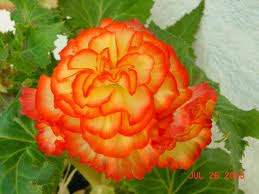This this genus belongs to the begoniacae family and contains around 900 species of perennials, shrubs, and climbers that are found throughout the tropics and subtropics. The most diverse species occur in the Americas.
Cultivation
Outside of tropical climates, begonias are best grown as indoor container plants. They grow well in a bright but not sunny position with cool, moist, humus-rich soil and need to be watered and fed well. Begonias are susceptible to fungal diseases so they need to have good air flow around them.
Top Tip
The many varieties of begonia offer a range of choices for the keen gardener. Some are suitable for basket planting, others as bedding annuals, while some cultivars are suited to terrarium planting.



